Last week we began our new Maths topic – Measurement.
The skills we will be learning in measurement are:
- What is length and how can we measure it?
- Appropriate measuring tools and how to use them
- Units of measurement: millimeters., centimeters, metres and kilometres.
- Perimeter
- Area
To begin with we brainstormed what we thought units of measurement were and what units of measurement we would use to measure certain objects. Here are some examples:
Small units of length are called millimetres.
A millimetre is about the thickness of a plastic id card (or credit card).
Or about the thickness of 10 sheets of paper on top of each other.
This is a very small measurement!

When you have 10 millimetres, it can be called a centimetre.
1 centimetre = 10 millimetres
A fingernail is about one centimetre wide.

A metre is equal to 100 centimetres.
1 meter = 100 centimetres
The length of this guitar is about 1 metre
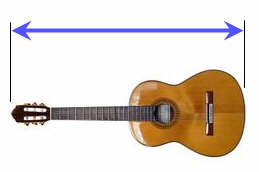
A kilometre is equal to 1000 meters.
When you need to get from one place to another, you measure the distance using kilometres.
The distance from one city to another or how far a plane travels would be measured using kilometeres.

We discussed as a class how to measure accurately. We need to make sure that we begin at the 0 and that the edge of object we are measuring is next to it. Its also very important to hold the ruler straight. We also discussed what the different units of measurement are on a ruler. Check out this video for more information!
Next we took part in a measuring competition as a class.
Our task was to work in our table groups and use our rulers to measuring different stops of paper in centimetres. The only hints we had was that no strip in all 5 coloured bags were the same length and the answers would either be whole centimetres like 18cm or 5cm or they were half centimetres such as 21.5cm or 14.5cm.
It was really important to work as a team and make sure we used our measuring skills that we discussed as a class in the previous lesson. These skills included; lining the 0 up with the end of the paper to measure, holding the ruler straight, reading a ruler correctly and using the correct units of measurement.
Watch our video below of us working together as teams by communicating and helping each other and using mathematical language.
IMG_0819 from skye baldwin on Vimeo.
For the next few lessons our class undertook a mini investigation involving measuring our bodies.
Our first task was to draw a table and record our estimates of the following body parts:
- Around the base of our thumb
- Around our wrist
- Around our neck
- Around our waist
- A body part of our choice.
We then worked with a partner and used measuring tapes to measure each body part. The units of measurement we used were centimetres. We are now getting better and better at estimating measurements each week with some students even estimating the exact measurement!
Next we were given an old saying to read:
Once around the waist, twice around the neck;
Once around the neck, twice around the wrist.
We had to use the information we had gathered to decide whether this saying was true for us.
We found out that whilst both measurements were not exactly the same as each other they were very very close. We decided that the saying was close to being true because of this observation.
Lastly we had to investigate if we could find any other pairs of body measurements that are double or half relationships. Most of us found that twice around the base of our thumb is the same or nearly the same measurement as once around our wrist. Check out some other statements we created that were true to our body measurements!

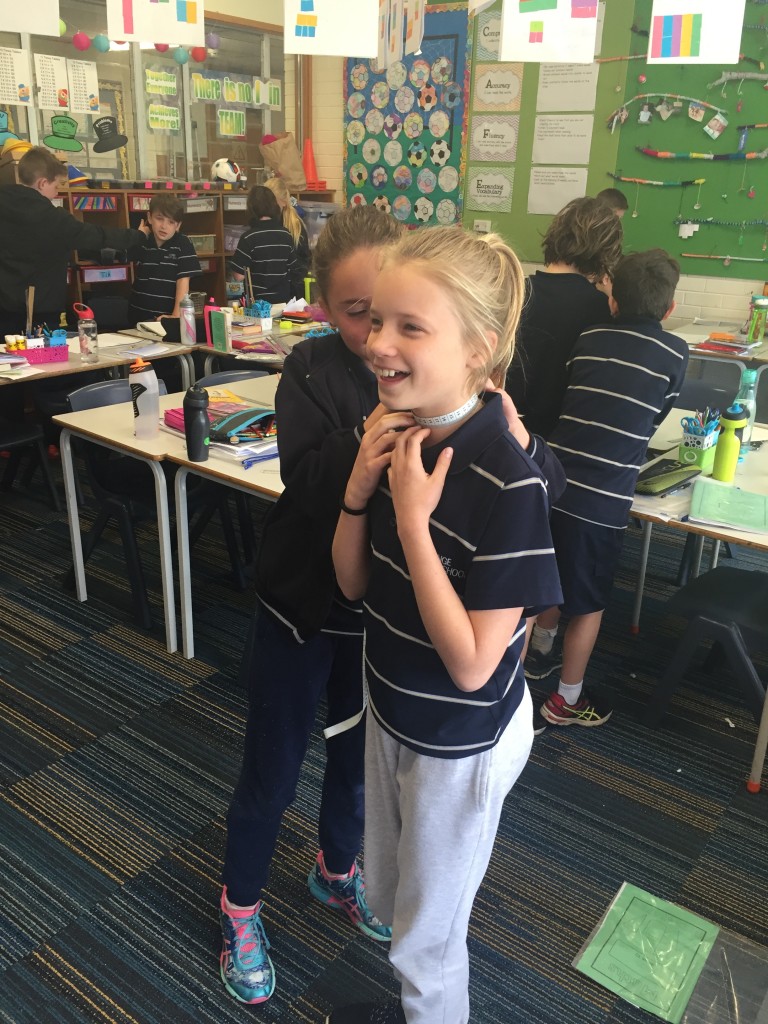
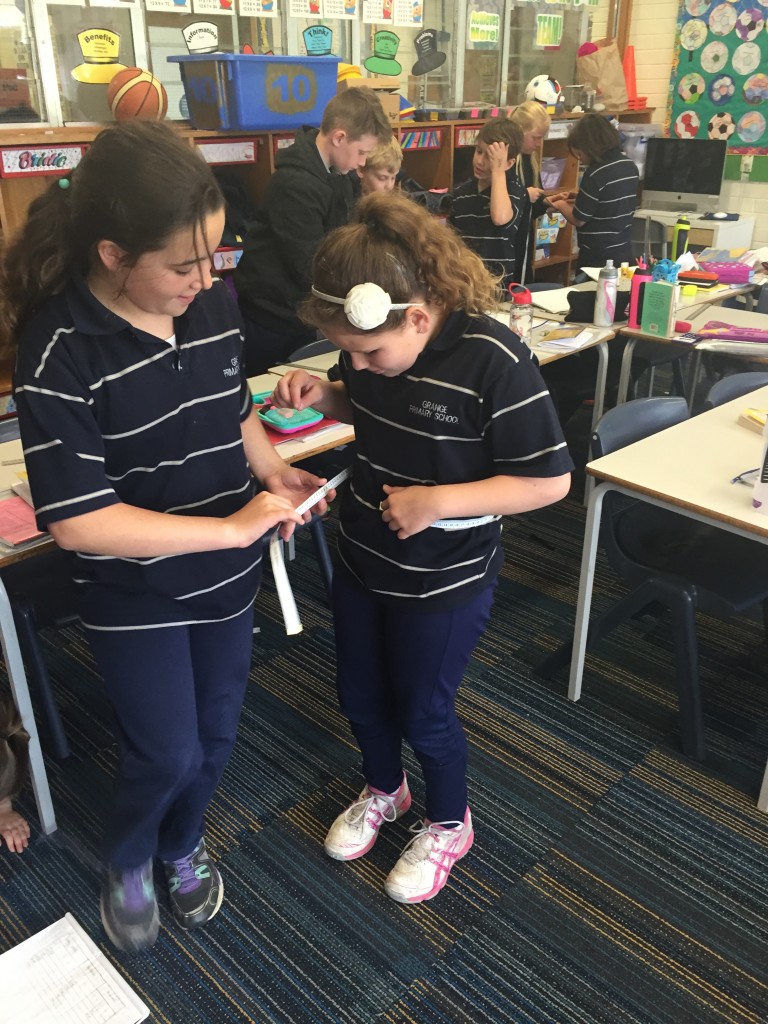
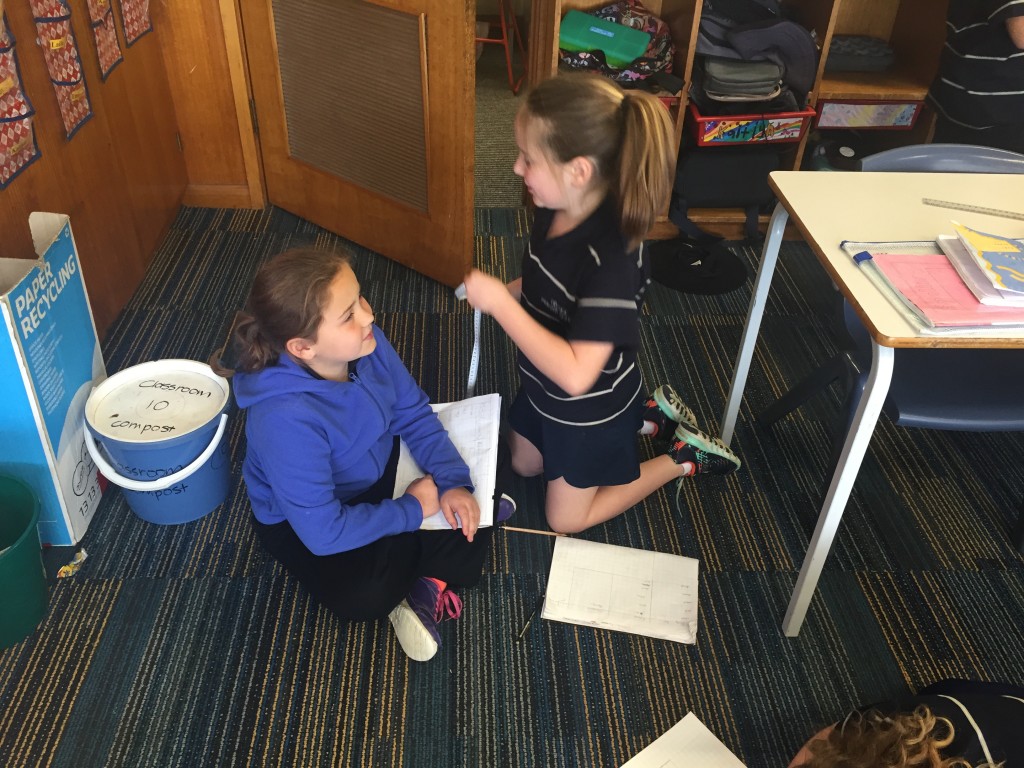
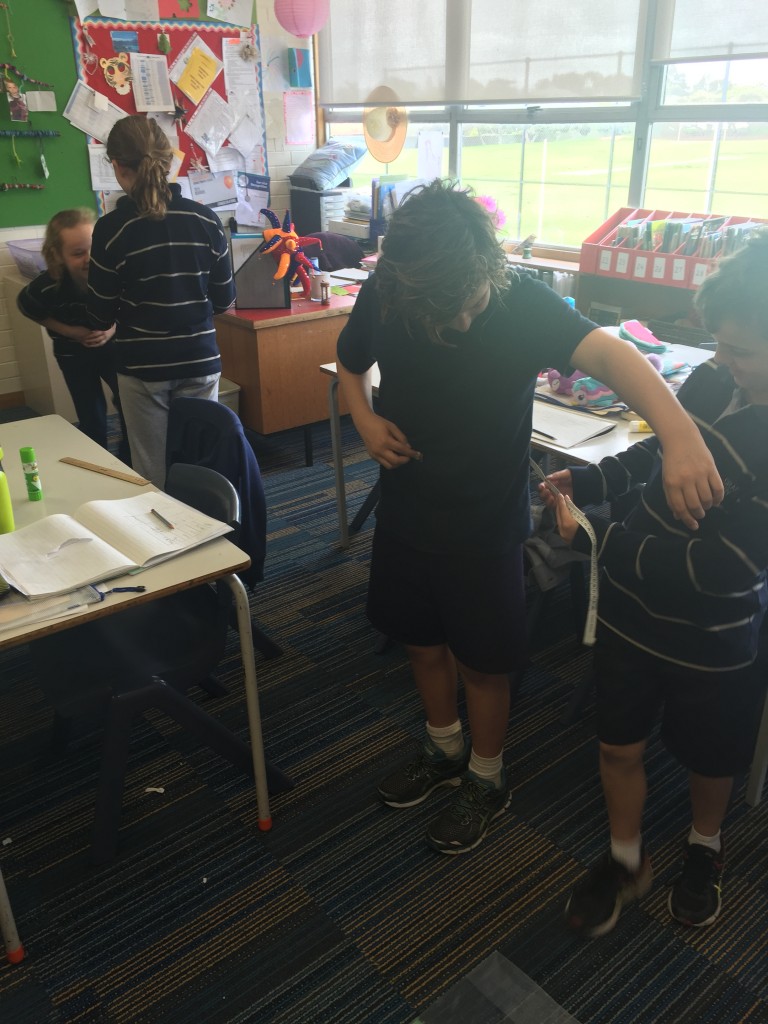
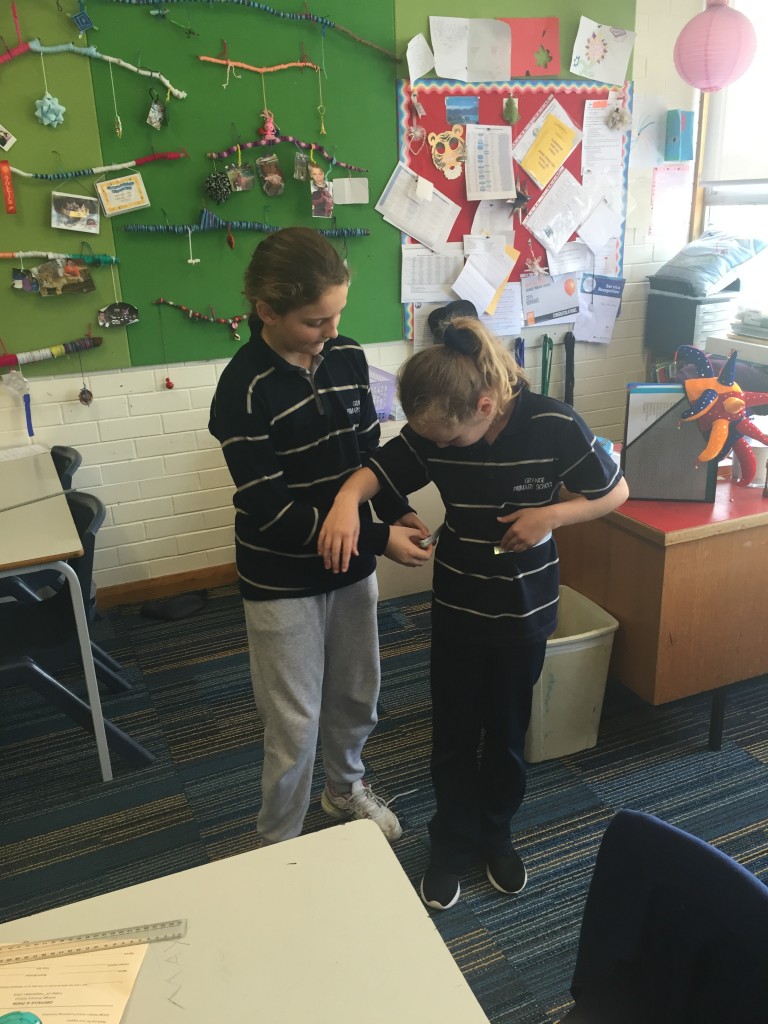
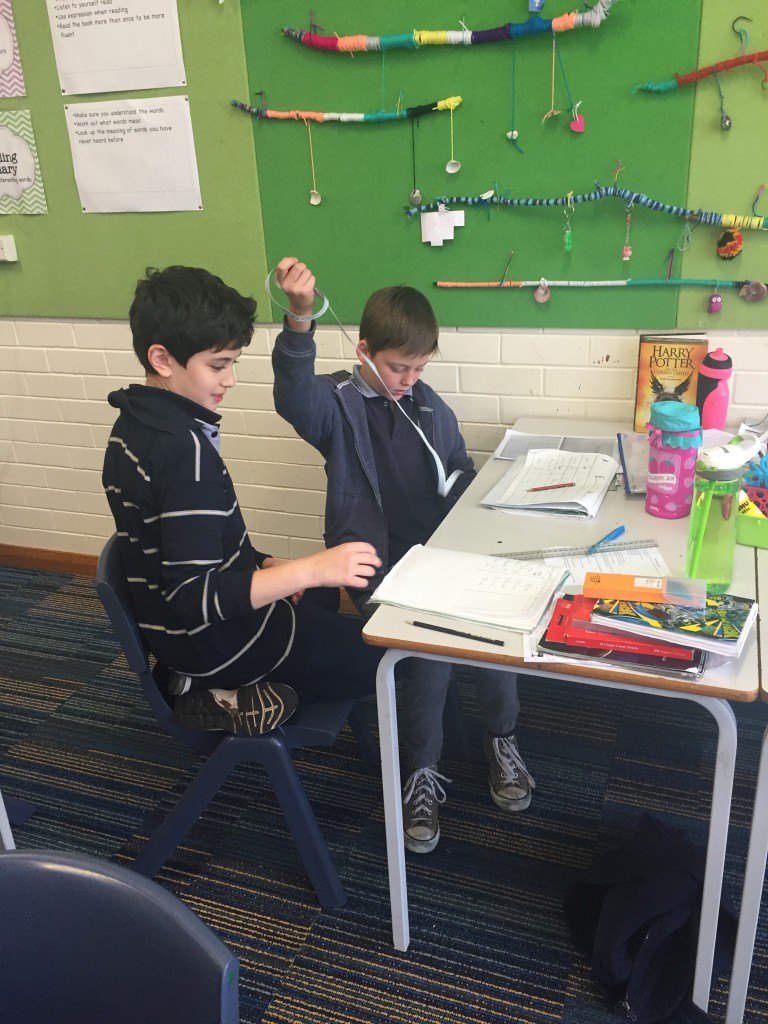
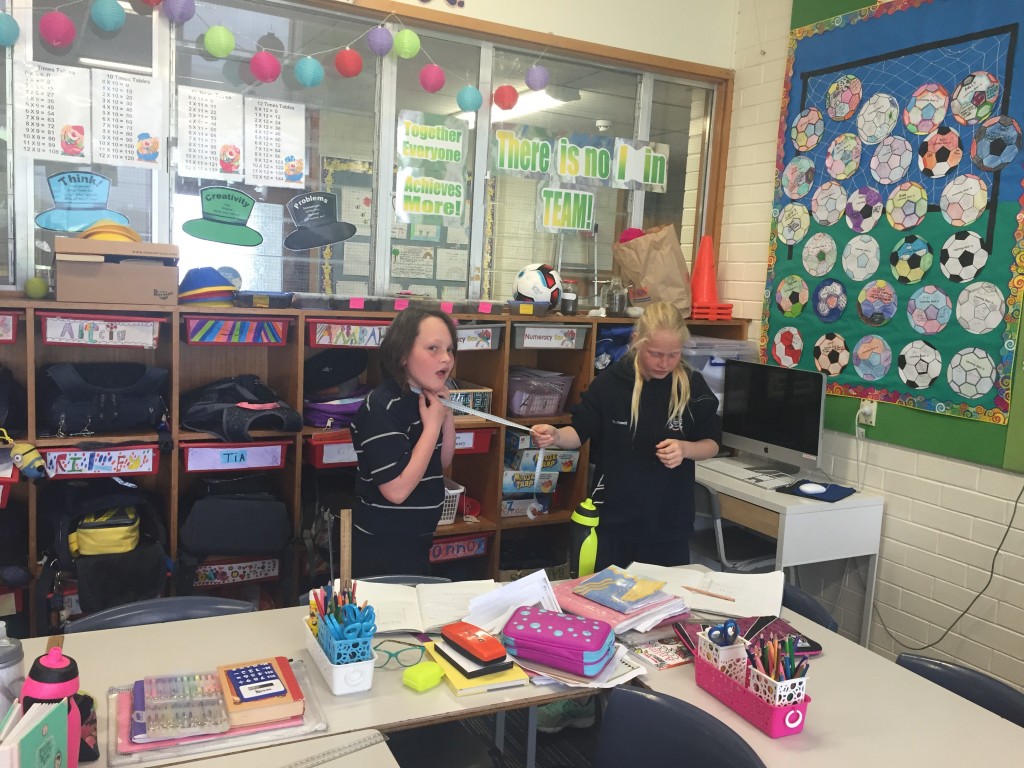
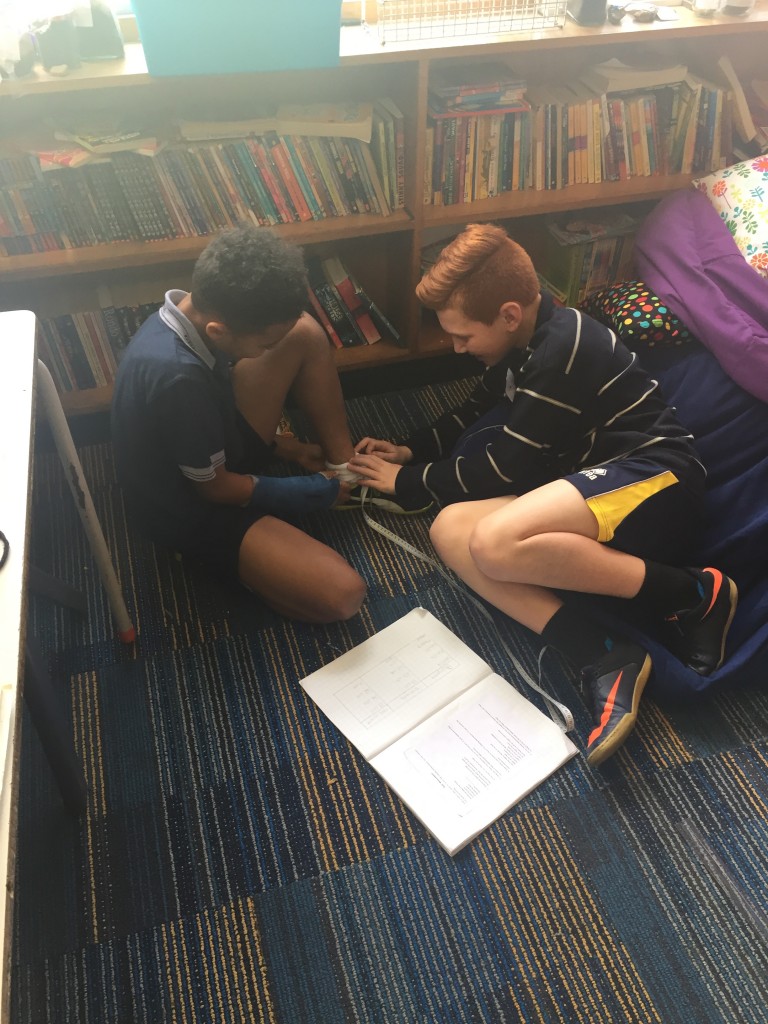
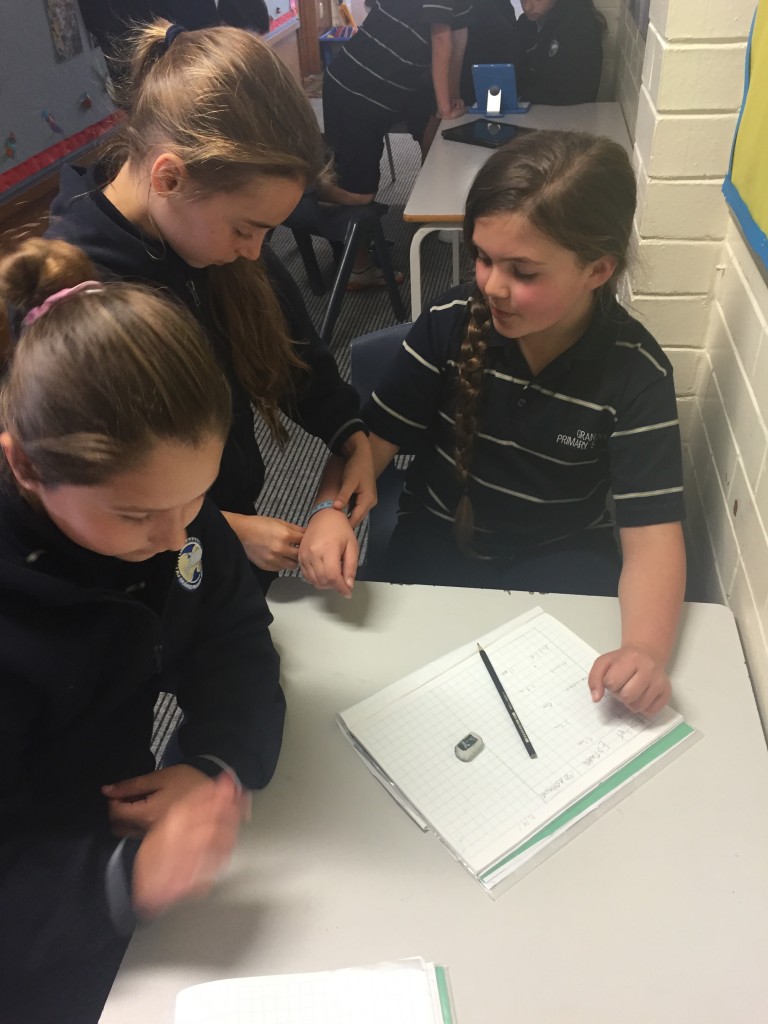
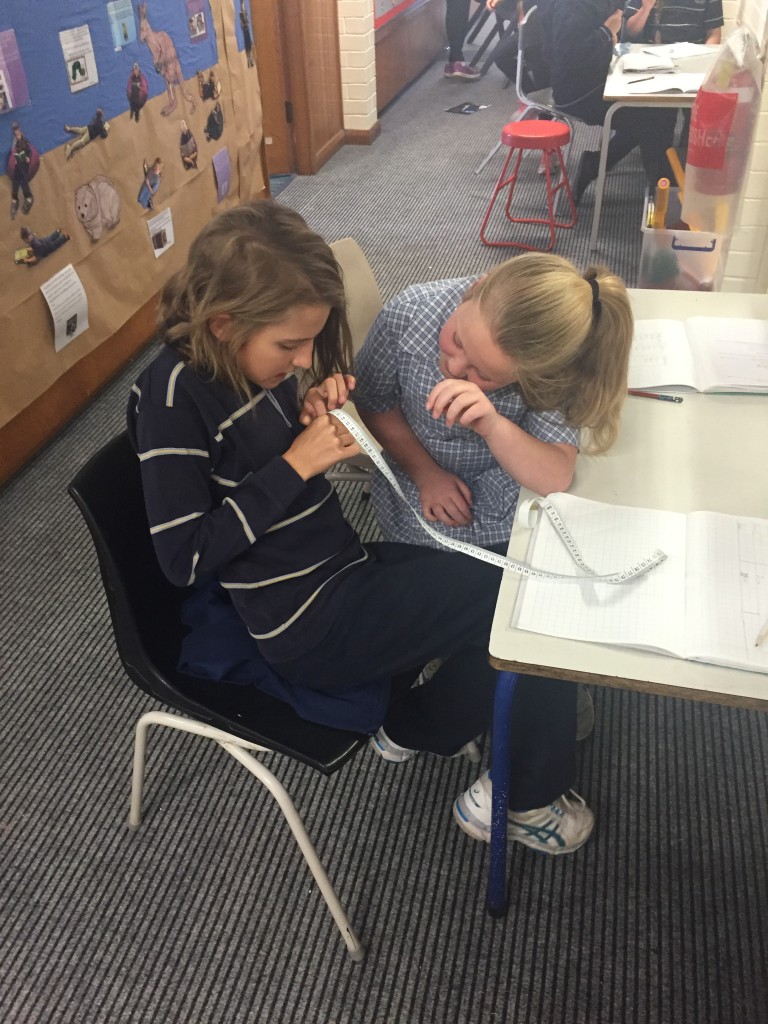
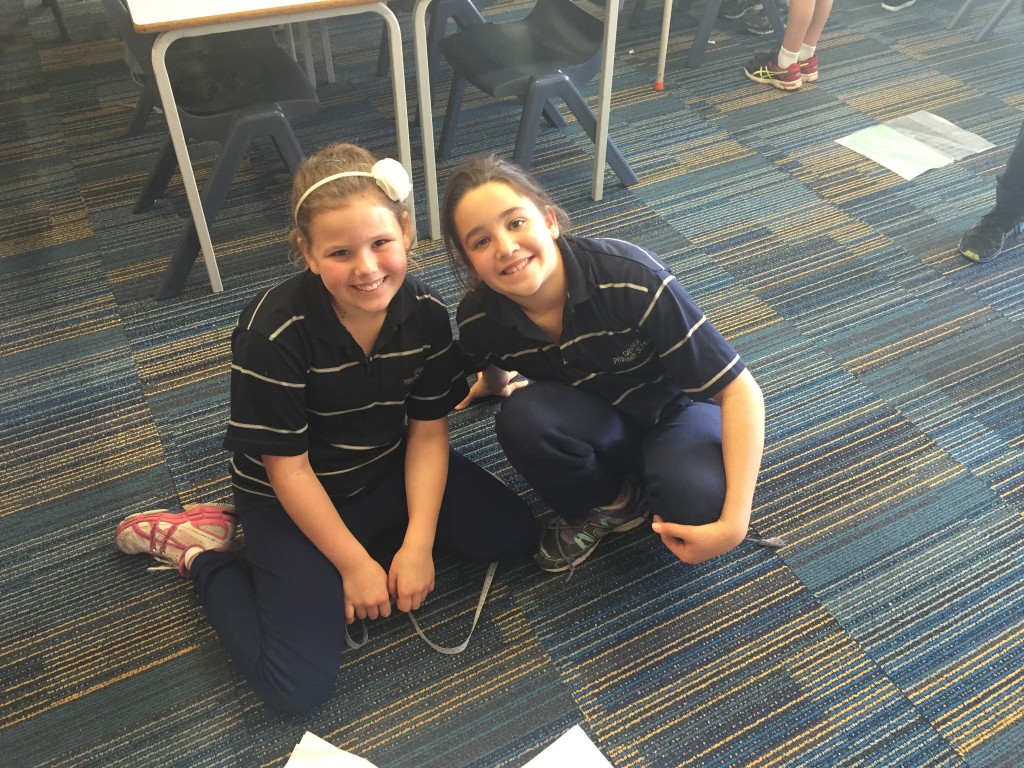

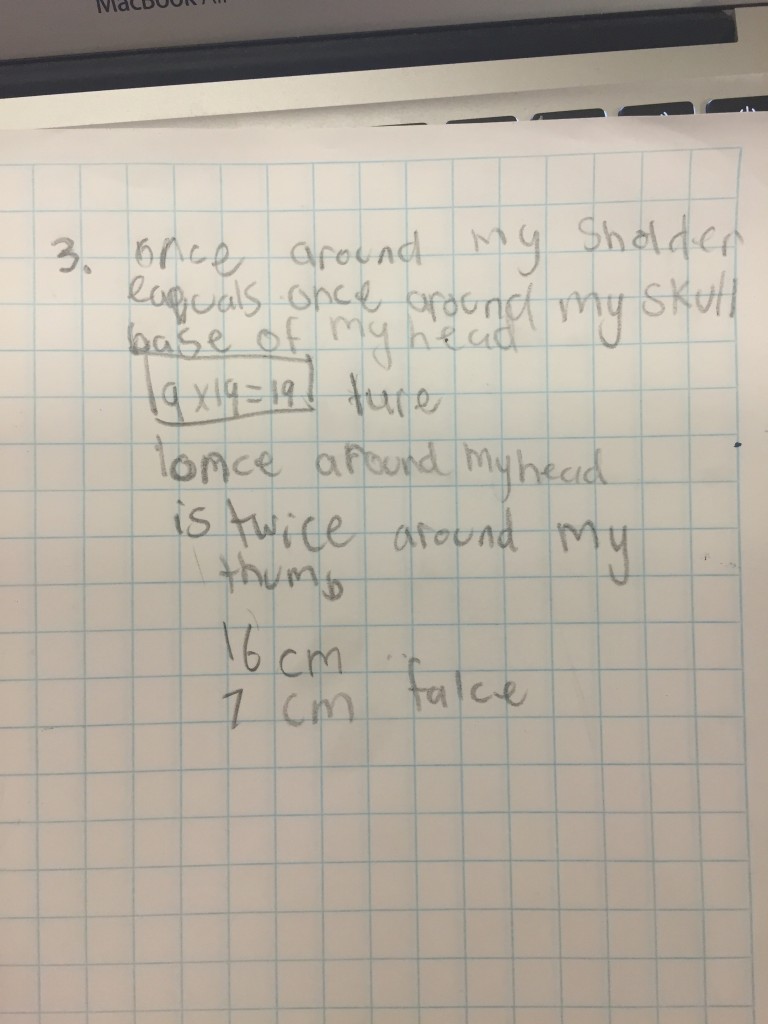
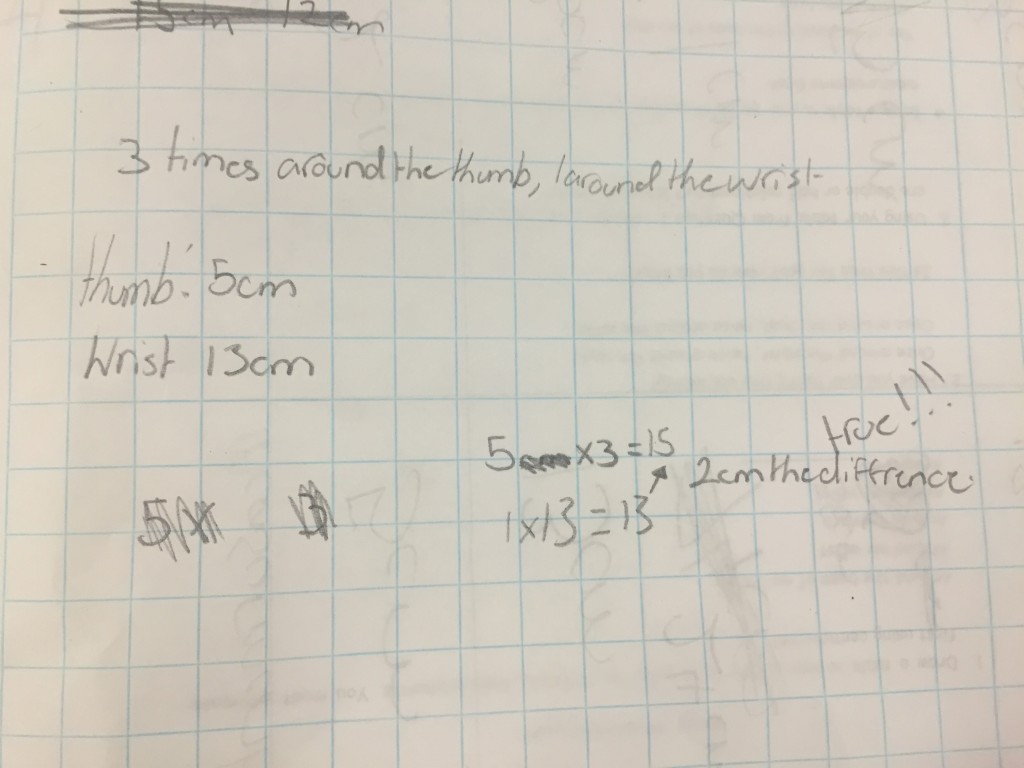
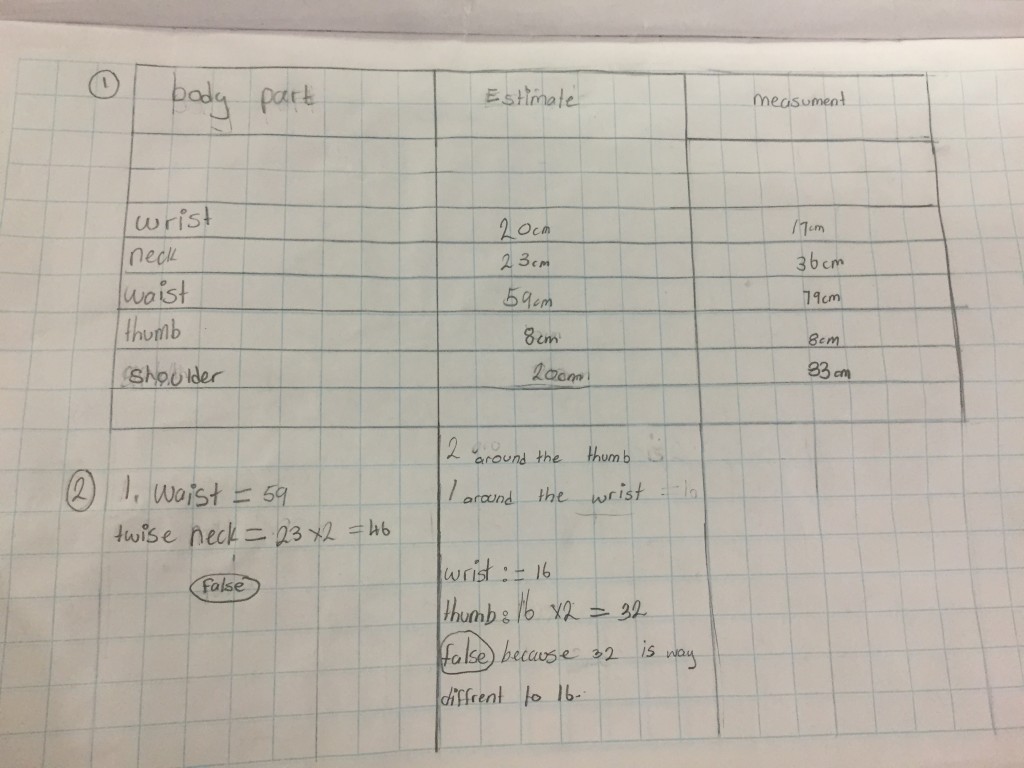

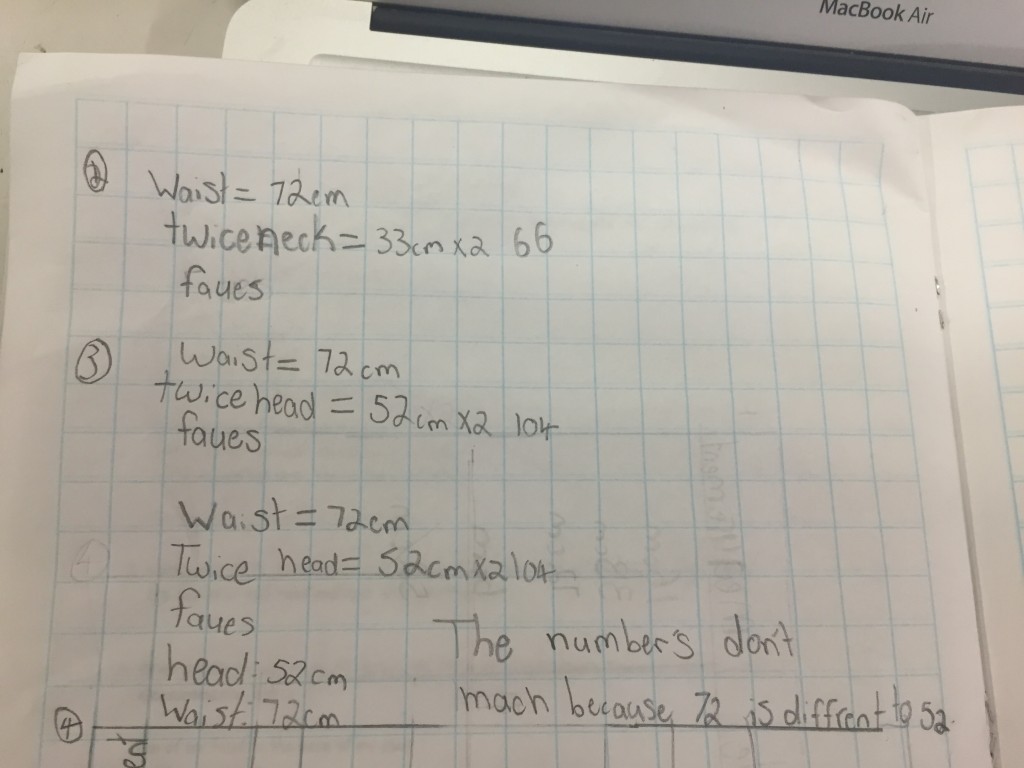

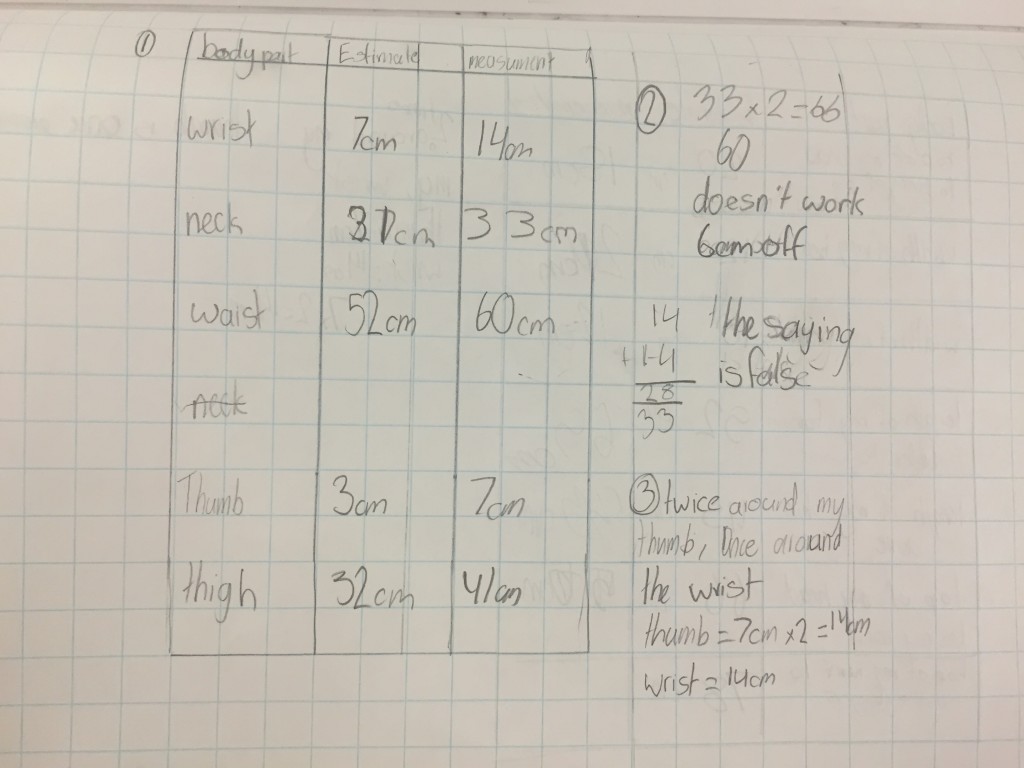
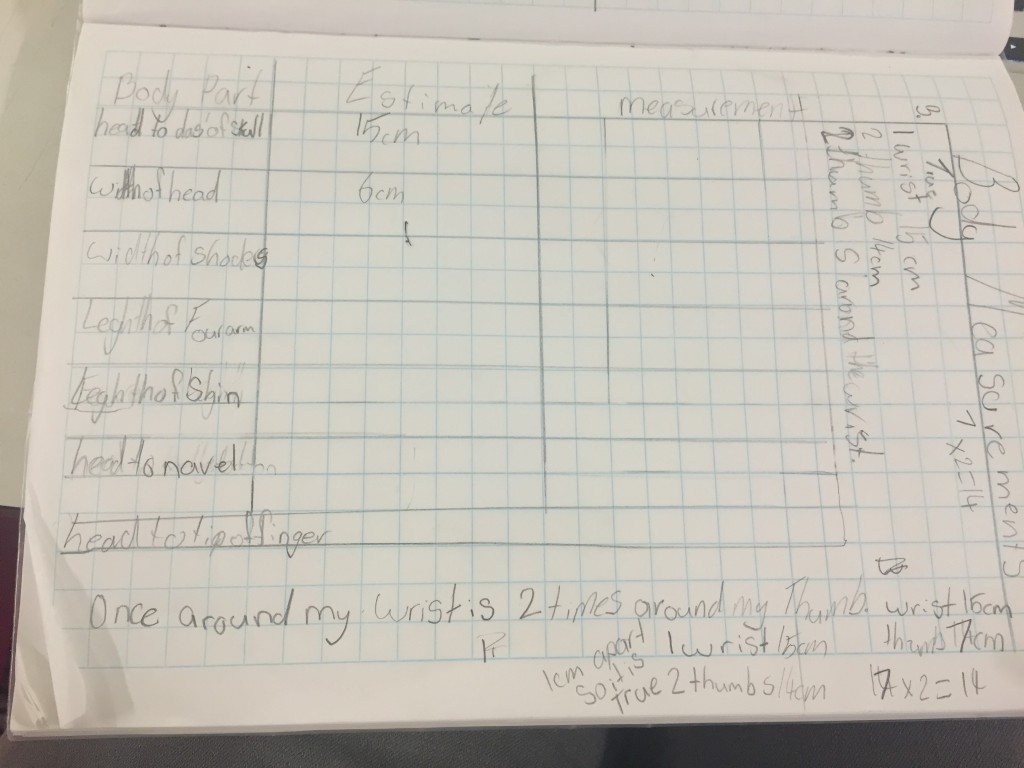
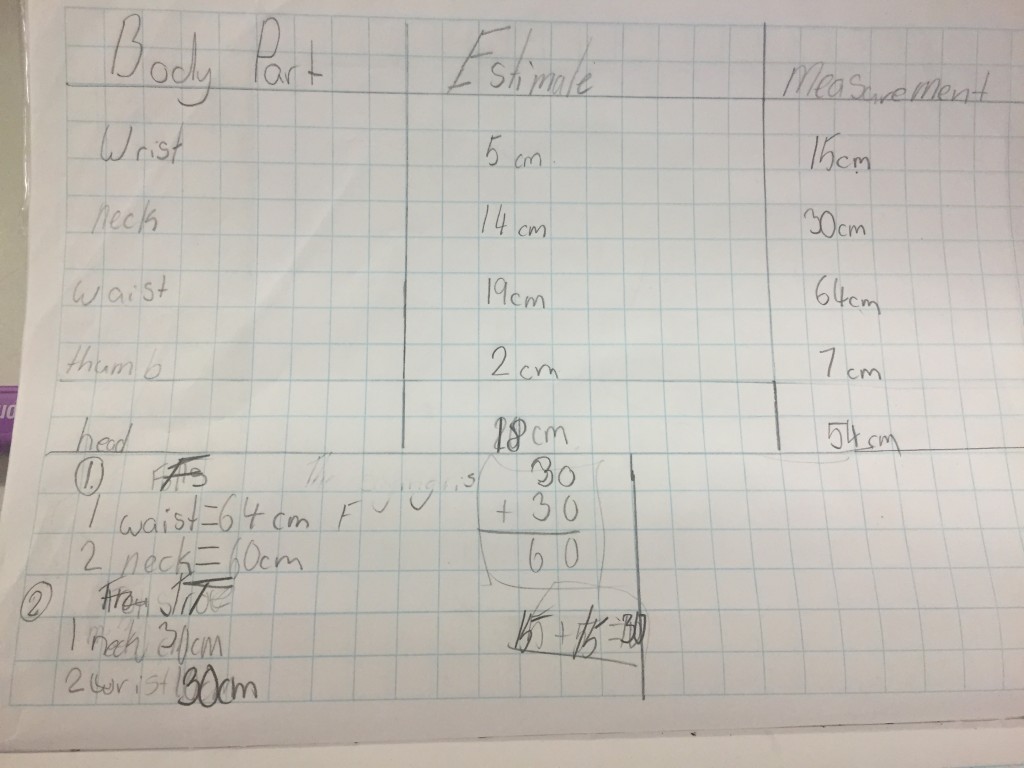
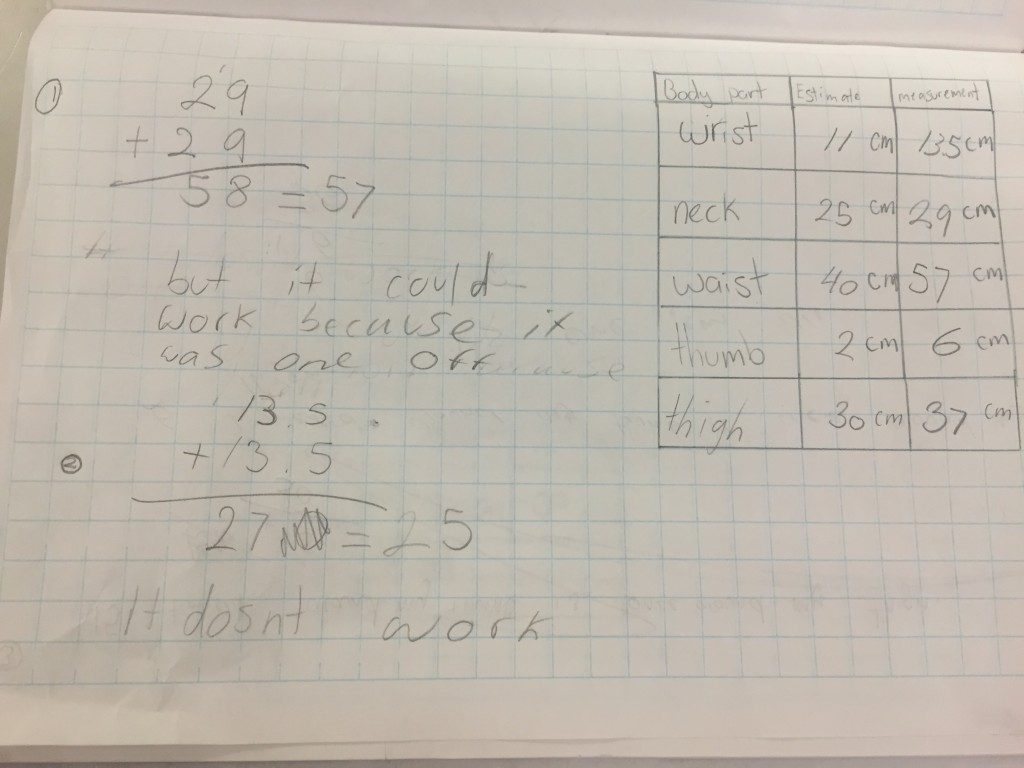
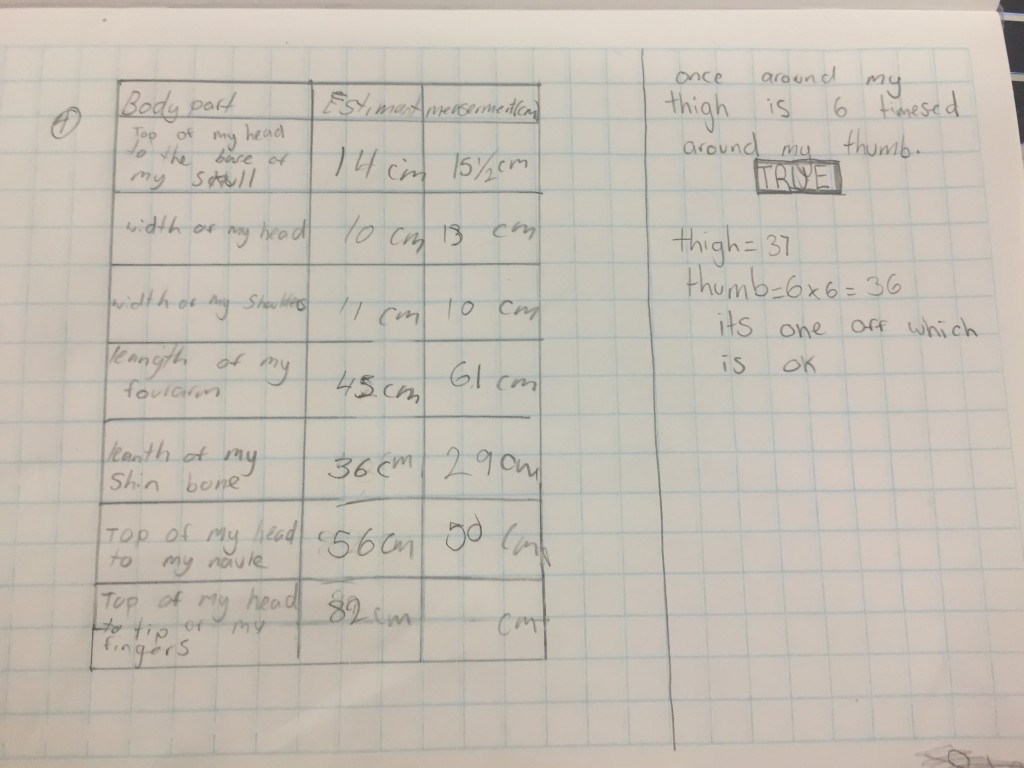
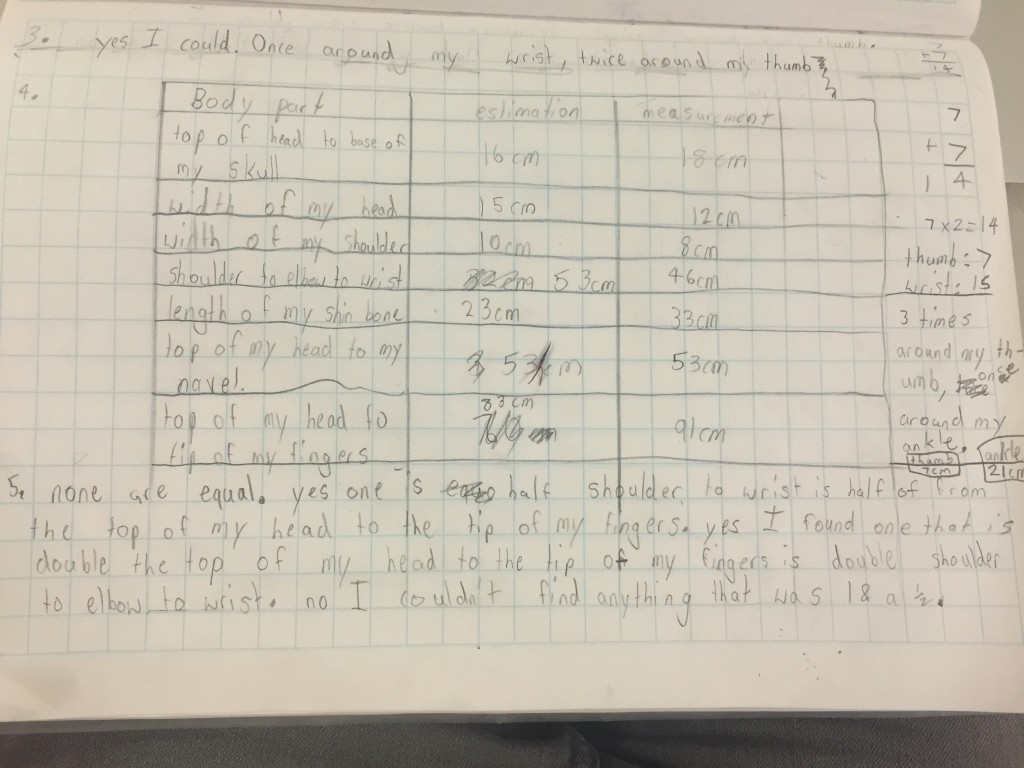

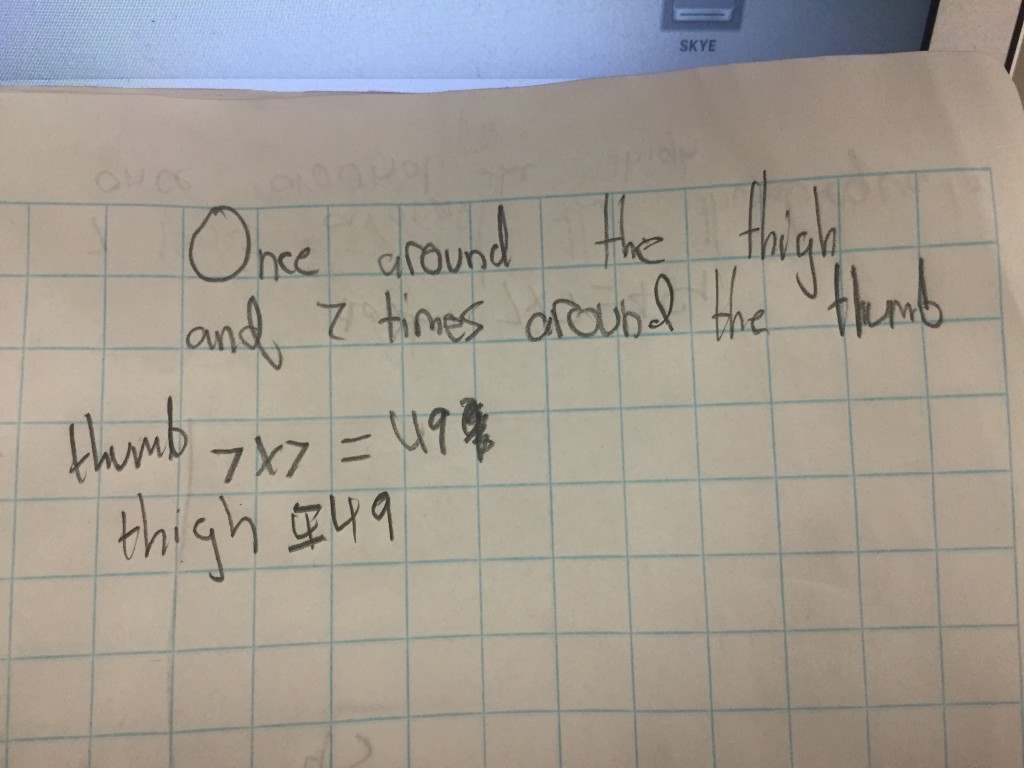
Dear Mrs Baldwin,
I found the Measurement Interesting because We worked as a team and all got different answers.
I saw someone measuring a gigantic fish.
from dylan
Dear mrs Baldwin,
I found this whole activity interesting because I know a lot about dimensions even made a powerpoint on it last year but now that we are doing it in class that is even better but I am still learning new things.
Well sometimes I see people measuring while building houses, in maths at schools and just building in general.
Dear miss baldwin
What i enjoyed about the activity was that you didn’t know how long your hip or wrist was so that was cool.
If you are a chipy or a carpenter you need to get perfect measurements or the thing you are building will have to be reformed.
Kind regards kern